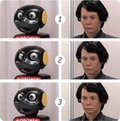 Egy új szimulációs modell komoly segítséget nyújthat az orvosi diagnosztikának.
Egy új szimulációs modell komoly segítséget nyújthat az orvosi diagnosztikának.The MRI machines and CAT scans, blood analyses and gene sequencing tools that are used to help diagnose our illnesses rely on advanced computing to extract knowledge out of molecular markers and reflected laser beams. “Medical advances may seem like wizardry,” remarked Harold Varmus, former director of the National Institutes of Health (NIH). “But pull back the curtain, and sitting at the lever is a high-energy physicist, a combinatorial chemist, or an engineer.” Ching-Long Lin, professor of mechanical and industrial engineering at the University of Iowa and a research engineer at IIHR-Hydroscience & Engineering, is part of a multidisciplinary team working to develop a new tool to image, understand, and diagnose how air flows through the thousands of branching passageways of the lung, and how abnormalities can lead to illness. “Our approach to understanding the airflow and particle transport in the human lungs is quite novel,” Lin said. “We use computed tomography [CT] images to construct realistic human lung models, and then we use computational fluid dynamics models to simulate the airflow through the lung.” His computer simulations on Lonestar and Ranger at the Texas Advanced Computing Center (TACC) combine 20 years of experience modeling turbulence and computational fluid dynamics (CFD) with cutting-edge medical imaging technologies to create a framework that will help doctors understand what causes asthma, how exposure to environmental pollutants alter the development of children’s lungs, and how the addition of helium to aerosol drugs can make pharmaceuticals more effective.
Komment: Ma már csak elvétve lehet találni olyan tudományterületet, ahol a kutatók nem alkalmaznak számítógépes a szimulációt. A számítógépes szimuláció fontosságát jelzi, hogy egy egészségügyi kutatásnak egy számítástechnikai kutatóintézet ad otthont.
Forrás: www.tacc.utexas.edu



